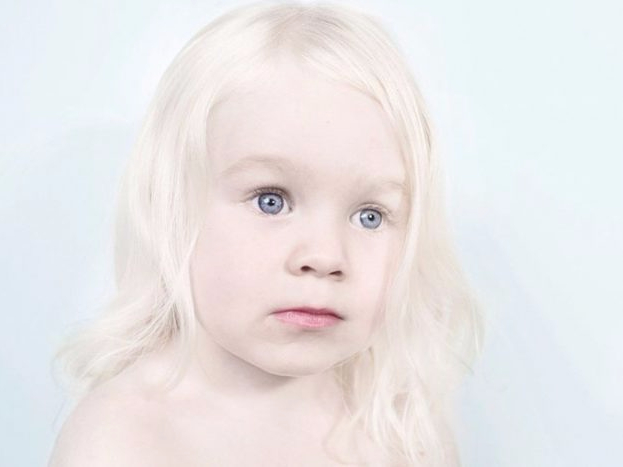|
|
Albinism Causes, Symptoms And Treatment
Money Land Forum / Health / Albinism Causes, Symptoms And Treatment (1 Post | 1,052 Views)
(1) (Go Down)
|
Albinism Causes, Symptoms And Treatment by atoluwash(m) : 12:51 pm On Nov 16, 2017 |
|
Albinism in people is a congenital illness characterized by the partial or complete lack of pigment in the skin, eyes and hair. Albinism is connected with numerous eyesight defects, including photophobia, nystagmus, and amblyopia. Deficiency of skin pigmentation causes for much more susceptibility to sunburn and skin cancers. In rare instances like Chédiak--Higashi syndrome, albinism could be related to deficiencies in the transport of melanin granules. This also impacts essential granules within immune cells resulting in greater susceptibility to disease.
 Albinism results in inheritance of recessive gene alleles and is proven to affect most of vertebrates, such as people. It is due to absence or defect of tyrosinase, a copper-containing enzyme involved in the production of melanin. It's the contrary of melanism. Unlike people, other creatures have several pigments and for these, albinism is regarded as a hereditary illness characterised by the lack of saliva particularly, at the eyes, hair, skin, scales, feathers or cuticle. While a organism with absolute lack of saliva is known as an albino an organism with just a diminished quantity of saliva is called leucistic or albinoid. The term is from the Latin albus, "white". Albinism includes a group of inherited disorders that are characterized by little or no production of the pigment melanin. The type and amount of melanin your body produces determines the color of your skin, hair and eyes. Most people with albinism are sensitive to sun exposure and are at increased risk of developing skin cancer. Although there's no cure for albinism, people with the disorder can take steps to protect their skin and maximize their vision. Some people with albinism may feel socially isolated or experience discrimination. Symptoms Signals of albinism are often, but not always, evident in a individual's skin, eye and hair color. But all people with the disease experience vision issues. Skin Though the most recognizable type of albinism ends in white hair and pinkish skin, skin coloring (pigmentation) may vary from white to brownish, and might be almost exactly like that of siblings or parents without albinism. For many people with albinism, skin pigmentation never changes. For many others, melanin production can increase or begin throughout childhood and the adolescent years, leading to minor changes in eczema. With exposure to sunlight, some people may grow: Freckles Moles, with or without pigment — moles without pigment are generally pink-colored Large freckle-like spots (lentigines) The ability to tan Hair Hair colour can vary from very white to brownish. Individuals of Asian or African descent that have albinism might have hair colour that is yellowish, brownish or reddish. Hair colour can also darken by early maturity. Eye color Eye colour can vary from very light blue to brownish and might vary with age. The absence of pigment in the colored portion of the eyes (irises) makes them somewhat translucent. This usually means that the irises can not fully block light from entering the eye. As a result of this, really light eyes can appear red in certain light. This happens because you are viewing light reflected off the rear of your eye and passing back out through the iris again -- like the red-eye that happens in a flash photo. Vision Signs and symptoms of albinism related to eye function include: Rapid, involuntary back-and-forth movement of the eyes (nystagmus) Inability of both eyes to stay directed at the same point or to move in unison (strabismus) Extreme nearsightedness or farsightedness Sensitivity to light (photophobia) Abnormal curvature of the front surface of your eye or the lens inside your eye (astigmatism), which causes blurred vision Causes Albinism is the result of a mutation in one of many genes. Every one of these genes provides directions for producing one of many proteins involved with the production of saliva. Melanin is produced by cells known as melanocytes, which can be found on your eyes and skin. A mutation might lead to no melanin whatsoever or a substantial decrease in the total amount of melanin. In some forms of albinism, someone must inherit two copies of a mutated gene -- one from each parent -- to be able to get albinism (recessive inheritance). Impact on eye development Regardless of which gene mutation is present, vision impairment is a key feature of all types of albinism. These impairments are caused by irregular development of the optic nerve pathways from the eye to the brain and from abnormal development of the retina. Types of albinism Types of albinism, based mainly on which mutated gene caused the disorder, include: Oculocutaneous albinism.  Oculocutaneous (ok-u-low-ku-TAY-nee-us) albinism is caused by a mutation in one of four genes. Some individuals with OCA kind 1 never encounter an increase in pigmentation, while others start to create melanin during early youth. Their hair may grow to be a gold blonde, brown or reddish, and their irises can alter colour and shed a few translucence. OCA type two is most frequent in sub-Saharan Africans, African-Americans and Native Americans. The hair might be yellowish, auburn, orange or ginger, the eyes may be blue-gray or tan, and the skin is white at birth. With sunlight exposure, the skin may, with time, create freckles, moles or lentigines. Individuals with OCA type 3, chiefly located in black South Africans, generally possess reddish-brown epidermis, ginger or red hair, and hazel or brown eyes. OCA kind 4 resembles type two and is most frequently seen in individuals of East Asian descent. X-linked ocular albinism.  The reason for X-linked ocular albinism, which happens almost exclusively in males, is a gene mutation on the X chromosome. Individuals who have ocular albinism have eyesight issues, but their own skin, eye and hair color are usually in the normal variety or slightly lighter than that of others in the family. Hermansky-Pudlak syndrome.  Hermansky-Pudlak syndrome is an uncommon albinism disease caused by a mutation in one of at least eight distinct genes. The disease is far more common in Puerto Rico. Individuals with this disease have symptoms and signs like people with oculocutaneous albinism, but they might also develop gut and lung diseases, or a bleeding disorder. Chediak-Higashi syndrome. Chediak-Higashi syndrome is a rare form of albinism associated with a mutation in the LYST gene. With signs and symptoms similar to oculocutaneous albinism, the hair is usually brown or blond with a silvery sheen, and the skin is usually creamy white to grayish. People with this syndrome have a defect in white blood cells that increases their risk of infections. Prevention If a relative has albinism, a genetic counselor can help you understand your likelihood of having a potential child with albinism. They can also describe the available evaluations and help you find out the advantages and disadvantages of testing to your family member. Source: https://aderonkebamidele.com/albinism-causes-symptoms-treatment/ |
(1) (Reply)
Uganda Lunches A New Cancer Treatment Machine / Cancer Surgeries, Chemotherapy Now Covered By NHIS / Honey Cure For Eye Infection /
(Go Up)
| Money Land Forum - Copyright © 2016 - 2024 | Aderonke Bamidele (Admin). All rights reserved. Follow Money Land Forum on Facebook and Twitter Disclaimer: Every Money Land Forum member is solely responsible for anything that he/she posts or uploads on Money Land Forum. |

